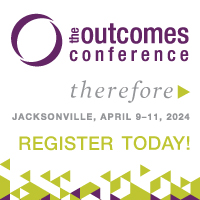
Innovate to Great by Allen Thornburgh
 Six Steps to Innovate and Drive Growth
Six Steps to Innovate and Drive Growth
Remember Circuit City? “Where service is state of the art”? Dark, cavernous consumer electronics stores with red carpet and nearly-impossibly- knowledgeable salespeople? Ring a bell?
Not if you’re under 30, because Circuit City — one of Jim Collins’ “great” companies in his bestseller Good To Great (Harper Collins, 2001) — declared bankruptcy in 2008. It was Circuit City.
That’s right, just seven years from greatness and $10 billion in sales, one of America’s biggest brands went belly up, and earned an inglorious spot in Collins’ depressing follow-up book How The Mighty Fall (Jim Collins, 2009).
During the “great” years, my Circuit City colleagues and I were the ones sending you special deals on things we knew you liked. (If we sent you information, but no deals, that meant we knew you were an early adopter who didn’t need incentive beyond exciting product news.) As a Circuit City alum, I know the view from the edge of the precipice. It’s decidedly sub-awesome.
I’m reminded of that view when I look at quite a few Christian nonprofits: Organizational apex a decade past; cost-cutting focus; managers holding back the entrepreneurs; flat revenue; executives convincing themselves that “phooey to the data, the ministry is in its best years”; and, more than anything, a shortage of disciplined innovation.
“Innovation is your most important growth strategy.”
Aren’t we called to better? Too often, we tell ourselves “we can’t afford to be innovative — we’re not like those big Fortune 500 companies.” By all means, let’s commit to not follow the lead of Fortune 500 companies. The most innovative companies are the startups without any investment cash to speak of; it’s their entrepreneurial spirit and innovation disciplines we need to replicate.
Here are six things you can do, right now, to kick-start innovation in your organization:
Start trend spotting
Pull together a group of six to 20 freethinkers from all divisions and levels in the organization. Meet with a facilitator monthly for 90 minutes to explore trends and discuss innovative consumer strategies. See what insights you might apply to your organization.
Ask your marketers about your programs
This sounds like heresy, but it isn’t. Your programs are your products for your market. What is the biggest mistake CEOs make in regards to marketing? They keep their CMOs away from product and only allow them to touch promotion. Marketing — the discipline of providing value to humans — can’t successfully work that way. Too many organizations want to apply disciplined innovation to promotion but not program — that’s like going to market with one hand tied behind your back.
Grasp the discipline
Successful innovation isn’t achieved through an afternoon of executive brainstorming followed by a “just do it” approach to the C-suite’s favorite idea. Just as finance, fundraising, HR and IT have their disciplines, so does innovation. No nonprofit is going to replicate Proctor & Gamble’s world-famous innovation engine, but the discipline of Human Centered Design is accessible to any organization willing to learn.
Hold an innovation summit
Schedule a cross-divisional innovation summit, facilitated by a Human Centered Design practitioner. Spend the first half of the time learning the tools of the trade: Customer Journey, Empathy Maps, Nonlinear Interviews, Mind Maps and the like. Spend the second half exploring your biggest problems and opportunities and ideating potential solutions.
Listen to your audience
Surveys and social listening are important, but for innovation, nothing beats sitting down with people, face to face, and listening to them for an hour. Using fun tools like Image Sorts, Needs Ranking and Incumbent vs. Challenger exercises, you gain insights into what they love, what they fear, and how you might capture their imagination in a fresh new way. Remember to interview not just your current audience, but also people in the audiences you’d like to add.
Start one bold project
Most nonprofits’ growth strategies portfolios are way too safe. We would never tolerate such imbalanced investment portfolios for our 401(k)s; but when it comes to our ministries, we often act like “safest is best.” It isn’t. I’m currently working with a couple bold clients who are expanding into new audiences through digital documentary series strategies. They know success won’t be a predictable, linear path, but more like a zigzagging roller coaster. But they’re in it to win it. Unafraid. Bold!
Innovation is your most important growth strategy. Let’s not allow fear to keep us from the expansive impact to which we are called. Even if today your view is like mine from the Circuit City precipice, learning and applying the discipline of innovation can take your organization to “Good,” and ultimately to “Great.”
###
Allen Thornburgh is Vice President of Strategic Innovation at Masterworks. He loves helping bold Christian nonprofits increase their kingdom impact through new ministry participation opportunities for current and prospective audiences. This article first appeared in the 2017 Fall edition of Outcomes Digital Magazine.
In 2018, CLA presents the Collaborative Intensives at the Outcomes Conference, April 17-19. This brand new, innovative experience, will challenge your thinking and drive the way you approach growth and greater kingdom impact.
Be sure to register now and take advantage of early registration fees!

www.OutcomesConference.org
Now CLICK below to learn more about Biola University!

What is Christian Leadership Alliance?
Christian Leadership Alliance equips and unites leaders to transform the world for Christ. We are the leaders of Christ-centered organizations who are dedicated to faithful stewardship for greater kingdom impact.
Sign up for FREE blog updates.
Upcoming Events
Check back later!




